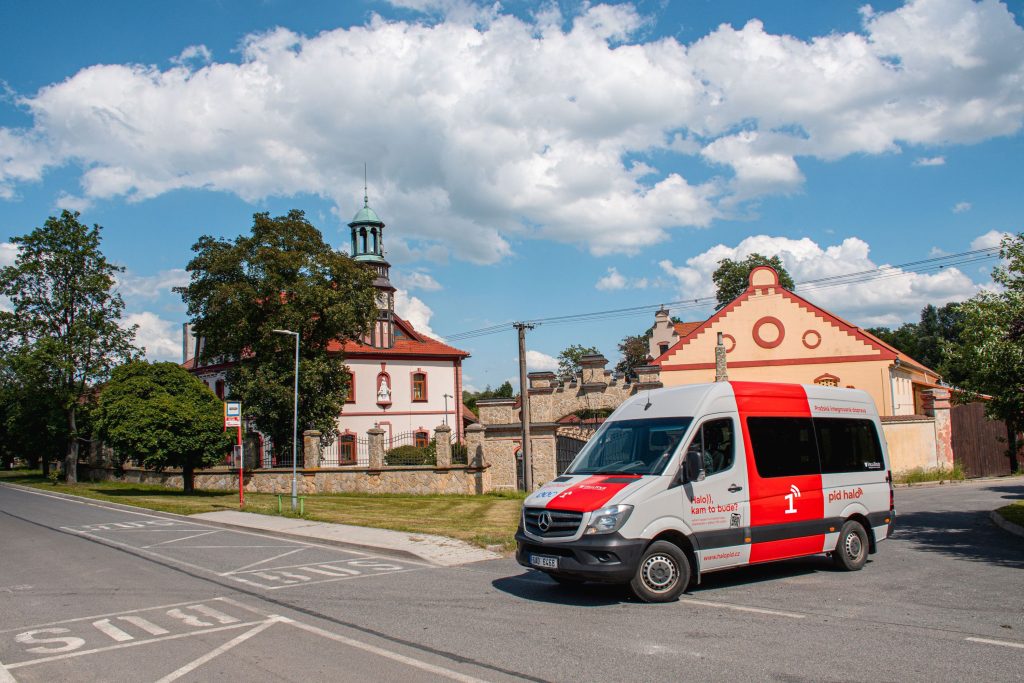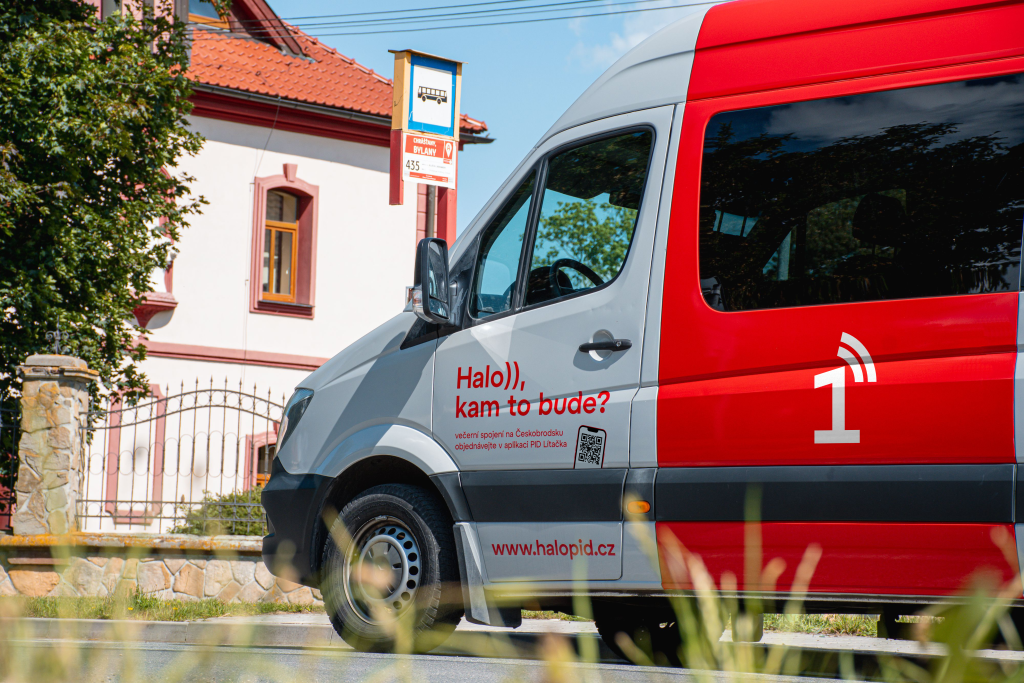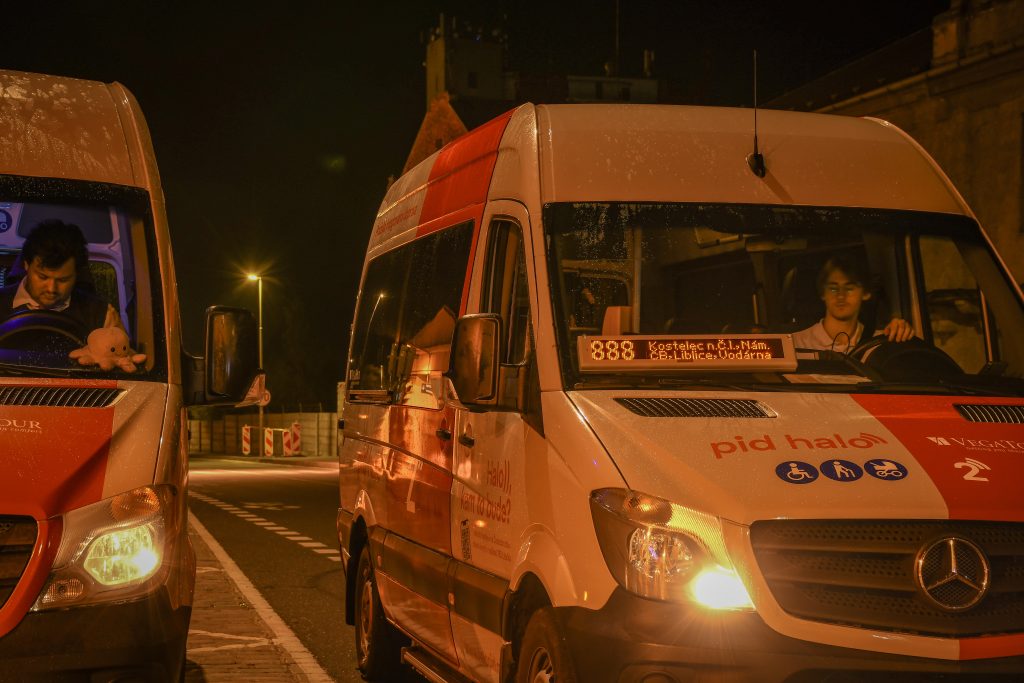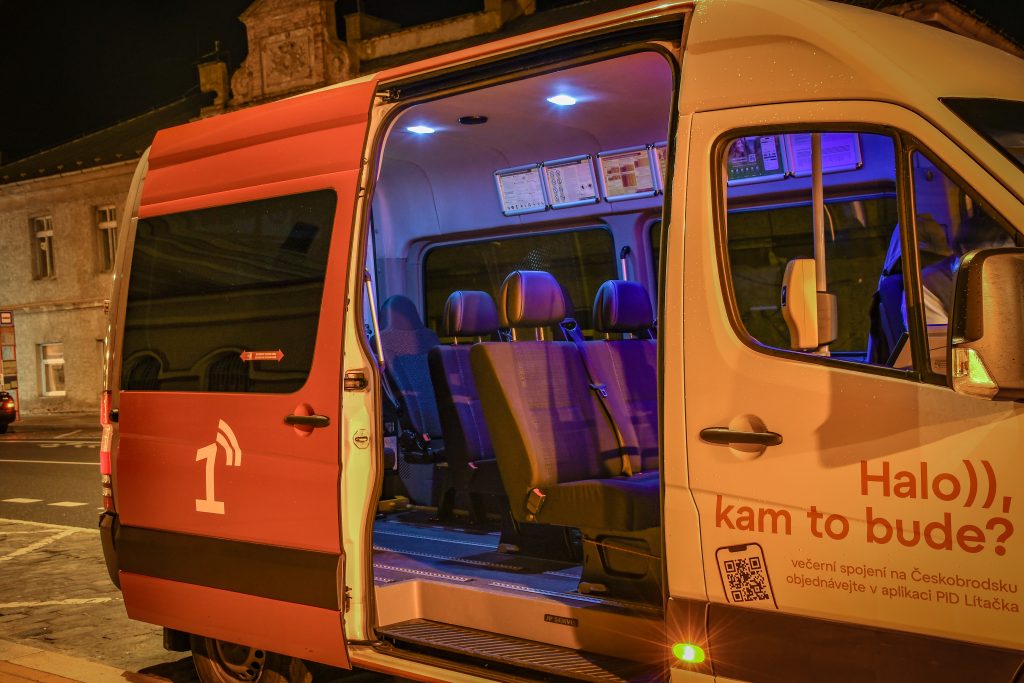Demand Transport PID Halo
Naposledy aktualizováno: 23. 10. 2024 | Publikováno 23. 10. 2024
PID Halo is a newly established pilot project of the so-called demand-response transport. It is the first implementation of demand-response transport in the Czech Republic under a public service obligation. The concept of demand-response transport does not work with fixed routes, timetables or times like conventional regular line transport. It allows for a completely dynamic creation of routes that are tailored to passengers according to their demand. Abroad, this concept is known as “demand responsive transport” or “transport on demand”.
The distinctive feature of the PID Halo project is its full integration into the integrated transport system. Fares are governed by the PID tariff, vehicles meet PID quality standards and transport ordering is done via the PID Lítačka application. As Czech legislation does not recognise the concept of demand-response transport, the operation is affected by restrictions such as the need to follow predefined route variants.
The purpose of the pilot project is to get an overall picture of the real needs of passengers, to obtain information on operational and economic parameters, to test the technology and last but not least to gain real experience for relevant comments on the upcoming changes to the relevant legislative standards.
Benefits for PID
In general, demand-response transport can effectively replace regular services with low load factors. In the Prague Integrated Transport system there is potential for the introduction of demand responsive transport, especially at peak hours and at weekends. In many parts of the Central Bohemian Region, for example, only backbone lines are in operation in the evening. These usually serve only the larger towns and it is not possible to reach the surrounding villages by public transport alone. On the other hand, connections to smaller villages are usually available at weekends, but at very long intervals (usually 4 hours). The demand for connections in such areas may not be constant and may only be for units of passengers for which it would not be worthwhile to operate a large bus.
Technologies and their integration
Technologies play a crucial role in the whole concept. Demand-response transport is based on a different logic than conventional bus services. Therefore, it was necessary to develop completely new software to reflect the specificities of demand-response transport. The development also had to take into account the limitations of existing legislation. This requires, for example, that the route variants used by demand-response vehicles be defined. During the development process, care was taken to ensure that the resulting software was as easily adaptable as possible to the expected legislative changes.
The basis of the entire solution is a monitoring application that stores all data on available capacity, such as vehicles and drivers, as well as demand. The customer can create a demand in two ways. The preferred one is to search for a specific connection using the PID Lítačka application. After searching for a connection that includes a demand response, the customer has the option to order the connection. The second channel is a special hotline.
Based on both channels are virtual assistants who handle 100% of all requests. There is no human factor in the whole process from enquiry to scheduling. The PID Lítačka application refers to the chatbot when a connection is found. The chatbot gets complete information from the PID Counter app about the searched connection and the customer who searched for it. Then, according to defined scenarios, it asks for the remaining information (e.g. whether the customer does not want to carry a stroller, etc.). The collected information is then used by autonomous planning algorithms to try to plan to the current capacity. All this happens in seconds at most. A voicebot is deployed on the hotline, which shares some of the logic with the chatbot. The difference is that the voicebot asks the customer for the entire connection. So part of the project was also teaching the voicebot specifics, such as correctly identifying when the customer wants to leave the “station” that it is the “railway station” stop.
The last of the main elements of the solution is a mobile application for drivers. Every order that is successfully scheduled is immediately displayed to the driver in the timetable. The entire solution is built on scalable cloud servers. Within this, reporting is used with the help of business intelligence tools.
Legislation
There are a number of constraints within the current legislation that make it impossible to operate a fully dynamic demand-response transport model under a public service obligation. The main limitation is the need to define a precise route with specific stops. This means that it is not possible to create routes directly tailored to actual demand, but only from predefined options. The second problem is the obligation to define fixed times. This makes it impossible to react flexibly enough to emerging demand.
New legislation is expected to come into force in 2025 that will address not only the above-mentioned limitations. It will now be possible to use so-called boarding points as an alternative to conventional bus stops. These will be places where smaller demand-response vehicles will be able to stop without having to set up a conventional stop.
What’s next
For the development of demand-response transport and the PID Haló project, we expect legislative changes to be introduced during 2025. The aim of the Integrated Transport of the Central Bohemian Region is to extend demand-response transport to other parts of the Central Bohemian Region to complement or replace the existing network of regular transport. An important step is the introduction of fully flexible route planning, which will increase operational efficiency. The PID Lítačka mobile application will continue to be the focal point from the passenger’s point of view.













